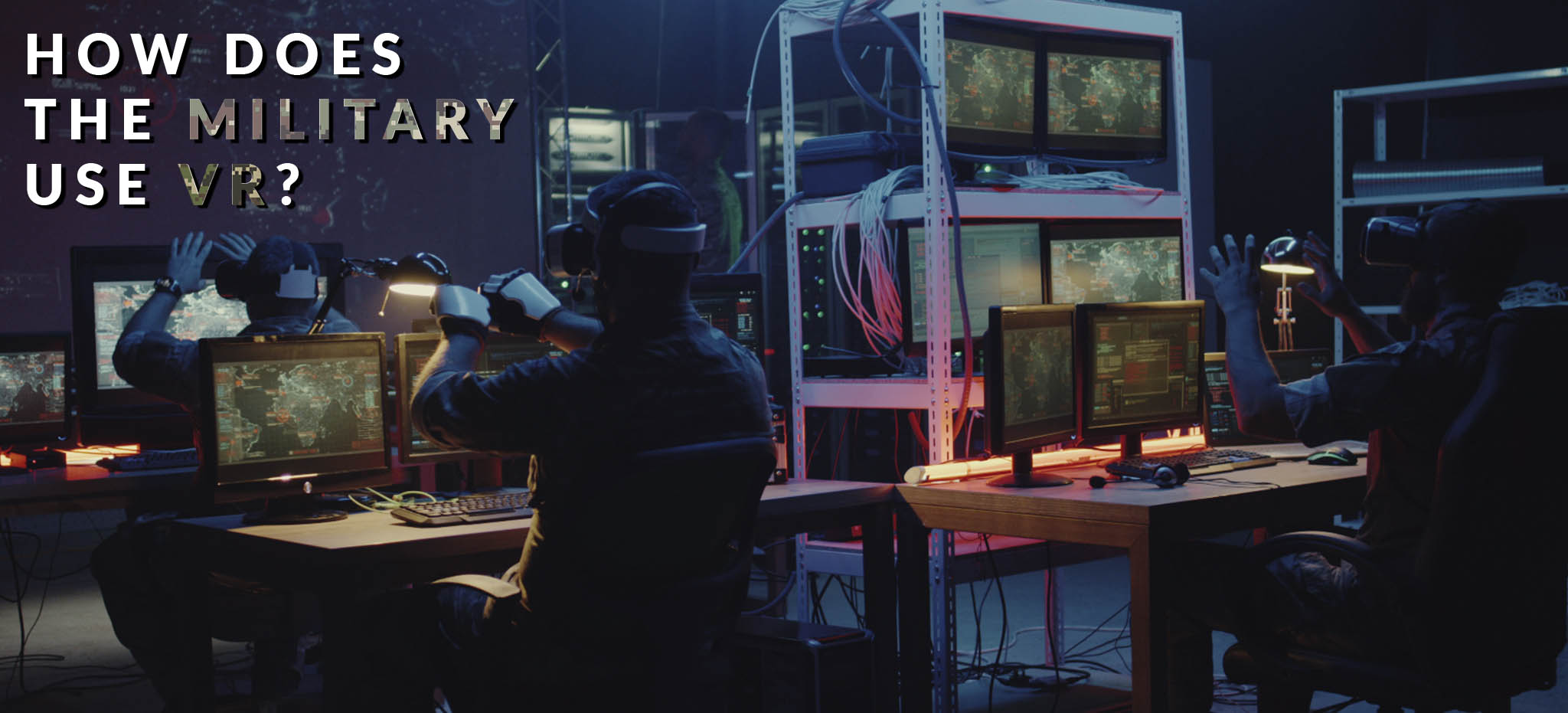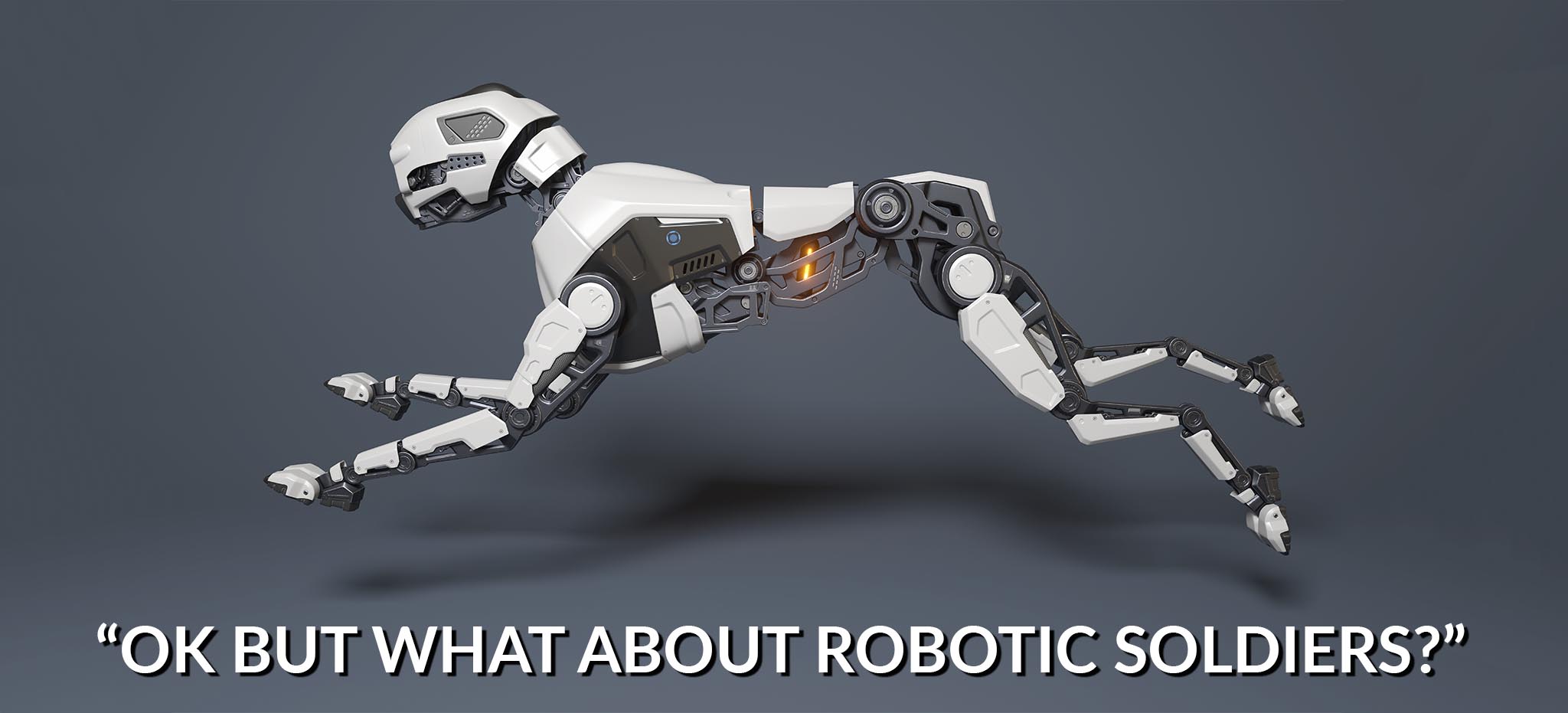
THE FIRST PEOPLE IN VR? SOLDIERS!
One of the first fields to start using virtual reality, militaries around the world have been reaping the benefits of this technology ever since the 1980’s. While this might have sounded intimidating and been a subject of many conspiracy theories, nowadays there are plenty of well-documented instances of VR use in the military, most notably in the United States and the United Kingdom.
SO, HOW DOES THE MILITARY APPLY VIRTUAL REALITY?
In the beginning, it was about building new, highly advanced training systems. The United States Air Force was the first to start using the Visually Coupled Airborne Systems Simulator, or VCASS – a flight simulator of sorts – back in 1982. Thirty years later, in 2012, the U. S. military announced its first completely immersive virtual reality training system, called the Dismounted Soldier Training System.
The advantages of VR training systems are multifold. They produce a realistic environment for soldiers and other military personnel to hone their skills, particularly when it comes to arms training and learning how and when to shoot.
In addition to that, virtual reality provides this training at a relatively low cost, since all that is really required is for the soldier to be outfitted with an appropriate VR headset. The safety factor is important as well, because virtual reality minimizes the risk of injury and even death during the training process.
VR systems that are widely used in military training include the Virtual Battlespace 3, a special software developed by a gaming company (Bohemia Interactive, which is responsible for several best-selling games, including ARMA), as well as the Live, Virtual, Constructive – Integrated Architecture (LVC-IA) that incorporates several training systems at once for a more integrated practice field.
It is important to emphasize here that, as of yet, military training is used as a supplement to real life training as is still not – or maybe never will be – the sole method of military training.
There are special military programs whose purpose is to help in the development of virtual reality systems. The Advanced Soldier Sensor Information and Technology has the task of producing special sensors that will collect data from the battlefields and improve the awareness of soldiers on the ground.
WHAT THE FUTURE HOLDS?
The hope for the future is that soldiers will utilize augmented reality by wearing headsets abundant with readings, feeds and tracking that enable them to make the most out of any terrain and any situation. This not only provides the soldiers with instant information that would otherwise take at least a few seconds for them to acquire, but it also helps reduce their cognitive load.
Cognitive load is the mental pressure we feel when we are faced with too many choices, lack of clarity and/or too much room for thought before making a decision. In emergency situations where lives are at stake, it is essential that this cognitive load is reduced to a minimum, which is exactly where augmented reality comes into play.
By having important information on display for the soldiers to check whenever they need to, their decision-making process speeds up, and they are able to react faster and come up with better strategies on the go since they don’t have to constantly memorize a large number of parameters.
AI ROBOTS ON THE HORIZON?

Okay, but what about robotic soldiers? Isn’t the idea that one day we will be sending robots into battlefields while our human soldiers sit comfortably in a chair somewhere and operate the robot through virtual reality?
While there is no 100% confirmation that any military in the world is working towards this goal, it would certainly be a logical step forward. However, for this to become reality, both VR software and hardware have to develop to the point where seamless transition from man to robot can happen.
Currently, the military uses special headsets, or head mounted displays (HMD), as well as data gloves for their virtual reality training. And even though VR technology is taking big leaps forward from day to day, it is not quite ready yet for long-distance robot-control.
Or at least the public isn’t aware that the technology is ready yet. It is entirely possible that secret programs are already working on applying virtual reality in ways we haven’t yet thought of but that will revolutionize warfare and peacekeeping missions as we know them.
GET IN ON THE ACTION!
So if you feel like you are ready for a new mission with either AR or VR, CONTACT US, and we will be on the move to provide you with military grade support in building your new app!


